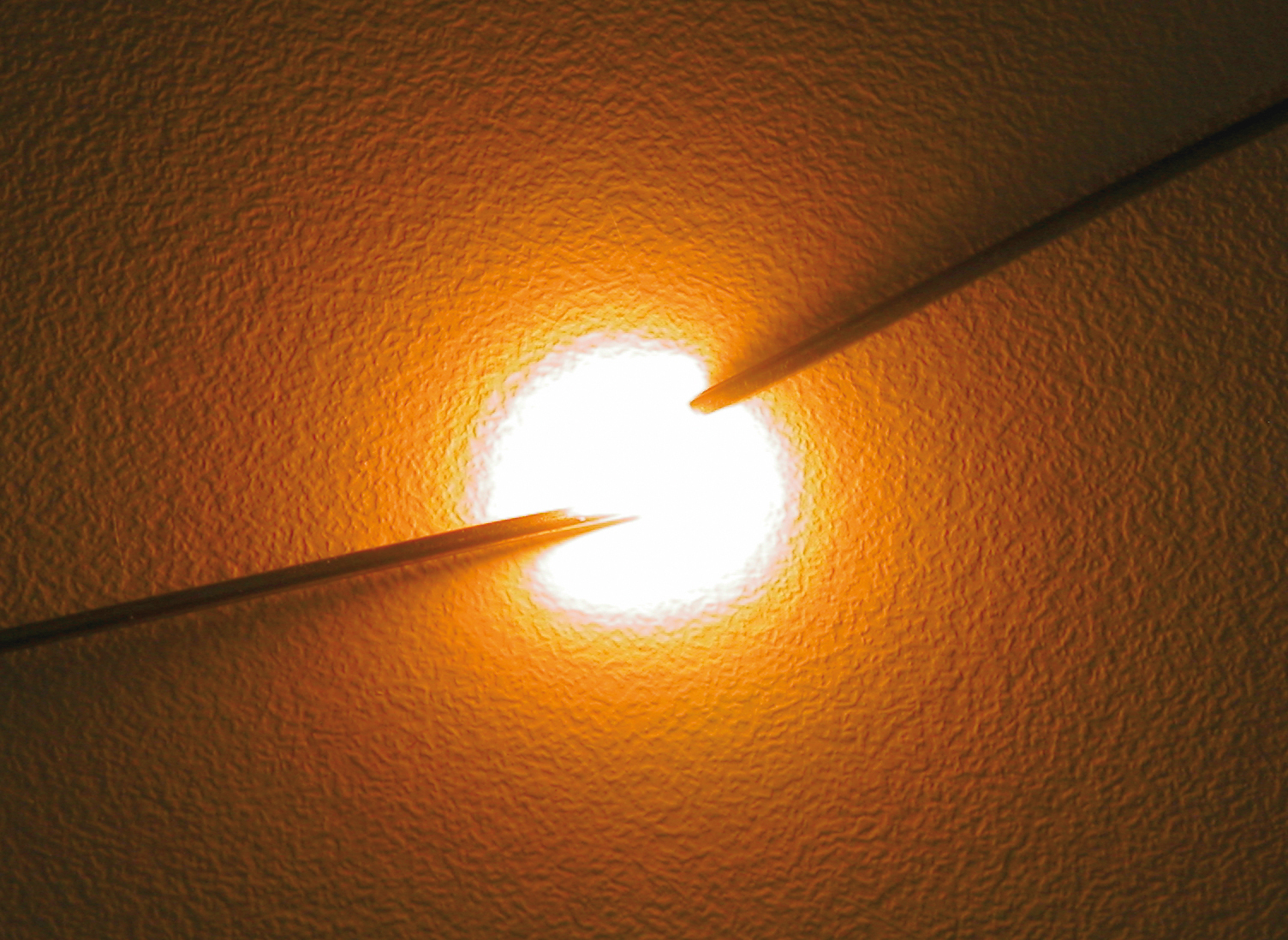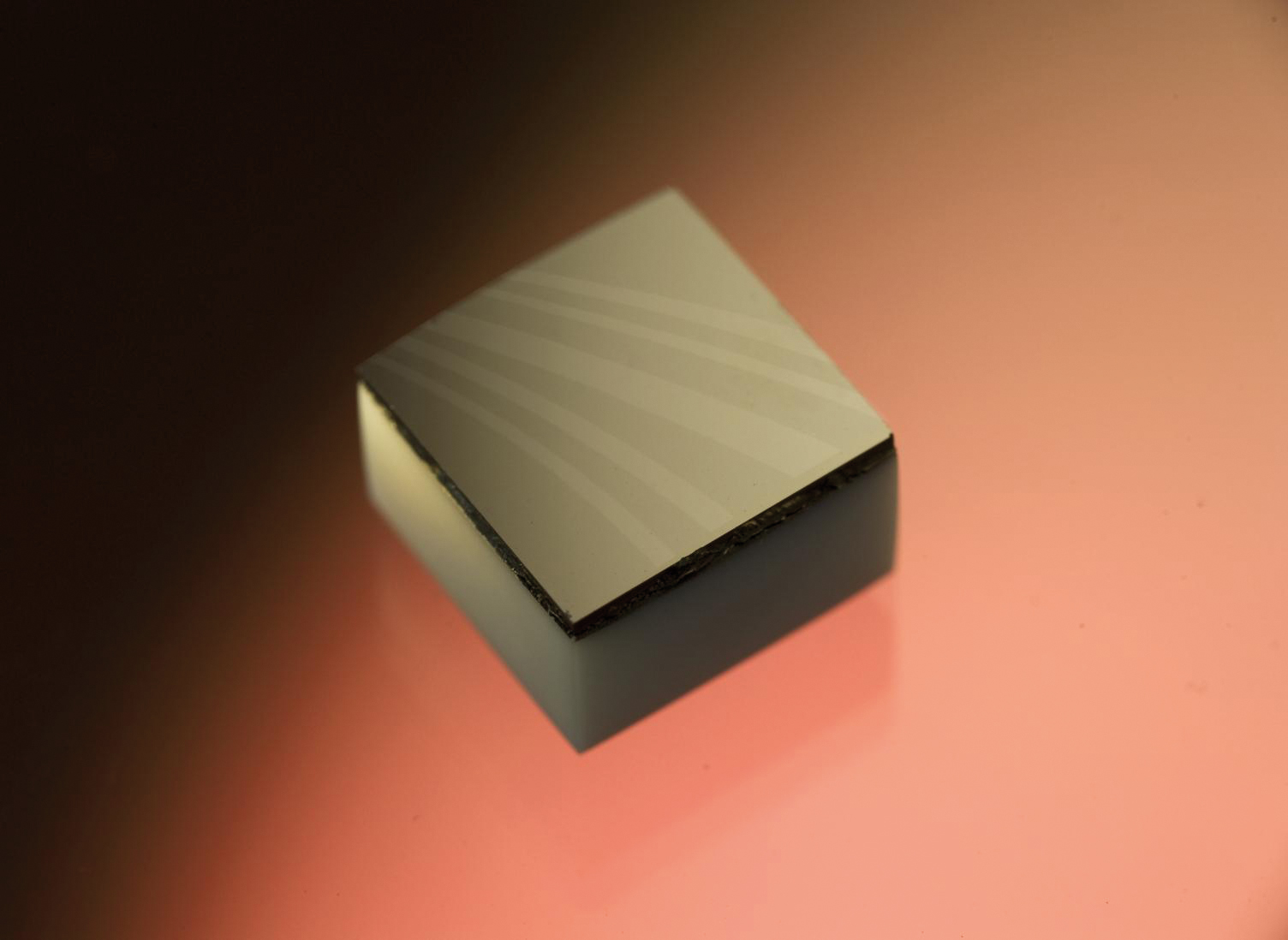Joining with a »click« by means of tailored reactive multilayer systems for various material combinations
If two thermally sensitive materials have to be precisely joined with low mechanical stress and, to top it, in a short time, the suitable heat source will be of utmost importance. Together with the Chair of Production Engineering of the TU Dresden, the Fraunhofer IWS has developed a heat source, which interiorly acts directly in the joining zone, a source which is most suitably tailored to the corresponding joining task. Metals, ceramics, semi-conductors, diamonds and most recently even polymers can be joined with this technology.


This method, developed in Dresden, implies that a reactive multilayer system (RMS) is positioned in between the two components to be joined. This RMS can be activated by, e.g., an electrical impulse. Initially the RMS consists of many single layers with nanometer thickness of at least two different materials. The ignition of the RMS initiates a chemical reaction, which delivers heat very locally and only for a short time. This energy is used to join the components without significantly heating the main components, within milliseconds. The following examples will show that »joining with a click« might become reality in the near future.
The successful use of the reactive foil has already been demonstrated for the soldering of these material combinations: brass-brass, ceramics – silicon, invar – silicon, silicon – silicon and ceramics – stainless steel. The necessary solders with melting temperatures of 200-300° have been applied either on the foil or on the components.
One exciting improvement of the reactive joining technique is the fact that the energy amount, provided by the reactive foils, could be doubled. Thus even solders, which need melting temperatures of up to 700°, can be used and the joining of components, which are exposed to higher temperatures, becomes possible. In addition, the application of these solder materials decisively improves the joining strength.
Furthermore we were able to achieve remarkable results for polymer joining processes (synthetics and plastics) with reactive foils. The energy delivered by the RMS directly melts the polymer’s surfaces, so that subsequently the joining of the polymer components can take place. The fact, that the heat can precisely be controlled by the nano layer stack design, very beneficially influences the result of this application. On the one hand the burning of the polymers can be avoided but on the other hand a defined liquid phase can be created.
Our aim for the upcoming developments is to utilize solders with melting temperatures of more than 1000°. This would open a huge application potential particularly for the joining of ceramics.
These and other remarkable innovations were presented at the first international symposium »Tailored Joining« at the International Congress Center Dresden (ICC) from October 17 – 18, 2012. (www.iws.fraunhofer.de/tailoredjoining). The symposium presented a platform to survey modern joining technologies, introduced new process developments and demonstrated memorable applications.
Prior to the symposium »Tailored Joining« the laser symposium »FiSC 2012« took place at the ICC, Dresden (www.lasersymposium.de). Renowned scientists and entrepreneurs met to present their latest results in the field of laser technology and systems engineering and took the opportunity to discuss their experiences, gained in the application of brilliant laser sources.
 Fraunhofer Institute for Material and Beam Technology IWS
Fraunhofer Institute for Material and Beam Technology IWS